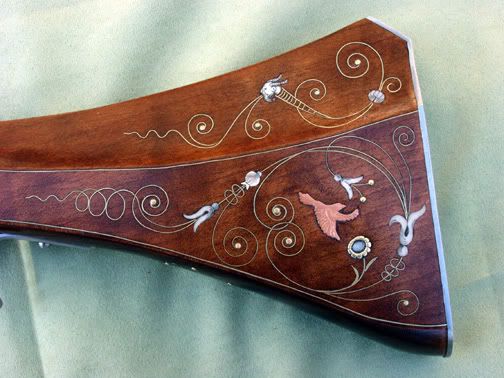Hi Jerry,
Thank you for the compliment and let me pay you one in return. Every time you show us an example of your work (like that buttplate or the photo above) I am inspired to work harder, learn more, and raise my own standard of artistry and quality. In a very real way you are teaching and mentoring possibly without knowing that you are doing so. Thank you.
I use fine silver ribbon because the higher copper content in sterling silver causes it to tarnish faster. However, that may not be a valid concern because the finish on the gun may seal the wire and prevent or slow tarnishing regardless of the silver alloy. The slightly greater springiness of sterling might create tension that holds the wire better in scroll work. I'll have to try it. I used diluted Elmer's glue to help lock the wire in place on the gun I showed above. The stock is cherry stained to look like applewood from northern France and the diluted glue did not affect the staining. The secret is diluting it a lot with water. However, I am certainly not convinced that glue is necessary. Water to swell the wood and the stock finish may be all that is necessary, which is what Dave Price also recommends.
Take care,
dave







